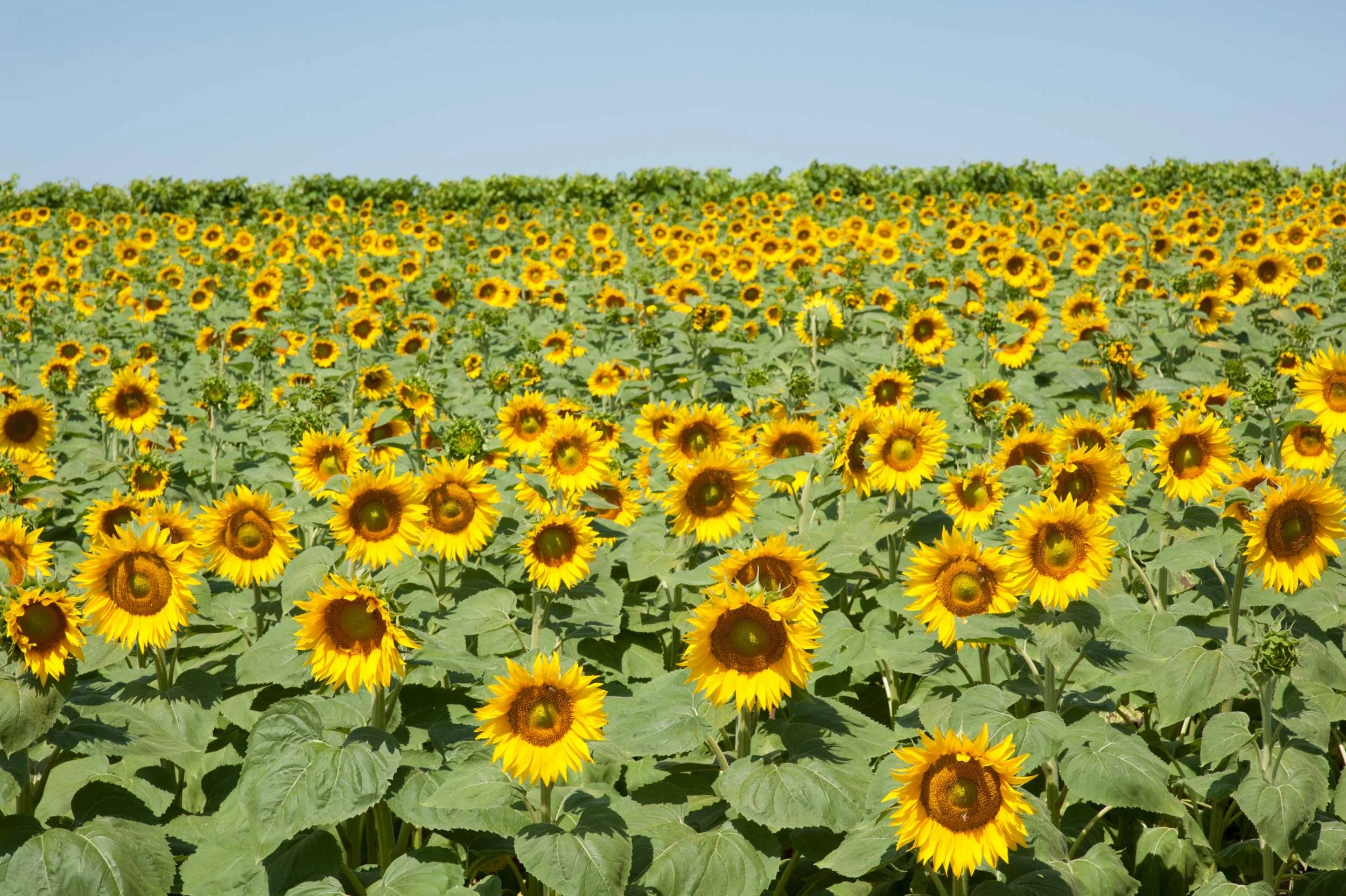The Sunflower is a symbol of happiness
When I see a sunflower, I can’t help but smile and, when I see fields of them, I beam. Just like a little girl in a toy or ice-cream shop, I turn this way and that, admiring row upon row of their majestic golden heads.
A beautiful field we discovered on a drive between Blaye and Talmont-sur-Gironde
The French name for sunflower is ‘Le Tournesol’ that translates in English to ‘follows the movement of the sun’. The young plant tracks the sun from morning to night. As the flowers mature and open, their growth slows and they settle into a stable east-facing orientation, favouring the morning sun. https://www.youtube.com/watch?v=GCRNHdGXTi4&t=49s
Sunflowers require 6-8 hours of sunlight a day and they aren't just one flower like they appear to be; in fact, they contain 1,000 to 2,000 smaller flowers. Each petal of the head of a sunflower is called a ray floret. The inner ‘eye’ consists of disk florets, which are arranged in patterns of interconnecting spirals. Only the disk florets develop into seeds and they can either pollinate themselves or cross-pollinate with other sunflowers with the help of wind, bees and butterflies.
A bee helping pollination
The fields of sunflowers that I admire are yellow but sunflowers can be purple, orange, red or a mix of these colours. There are dwarf varieties that grow only about 30 centimetres in height and giant varieties that can reach more than 3 metres!
This variety was found in the Royal Botanic Garden, Sydney, Australia.
Sunflowers are native to North America. Around 3000BC, Native Americans began breeding the plants to produce a single, large flower head instead of several smaller ones. They used them for medicine, oil and food. In the 1500s, Spanish explorers brought sunflowers back to Europe, where they soon became popular for their beauty and usefulness.
This spectacular view was from our B&B just outside of Toulouse
Development of the sunflower crop started in France at the end of the 1970s. Its cultivation was promoted in order to produce domestic and edible oil, which could substitute butter in cooking. Oh … really?!
Planting takes place in May and the flowers are harvested 110 to 125 days later, during August and September. We often wondered; how sunflowers are harvested. Watch this YouTube video to see the harvest method.
This was a sunflower we grew from a seed
Every part of the flower is useful. There is nothing to waste with a sunflower. While they are growing, they are beautiful to look at and later the leaves can be used as cattle feed. The seed kernels make tasty additions to bread and other baked goods or can be sprinkled over salads and other dishes. Not only are the seeds tasty, they are highly nutritious, being a rich source of protein, potassium, magnesium, calcium, iron and vitamin E.
These sunflowers are ‘dutifully’ facing east with a typically beautiful French house as a backdrop
Another interesting fact is that scientists have found that sunflowers have the ability to absorb high concentrations of toxic metals and radiation from the soil. Fields of sunflowers were planted across affected landscapes in Chernobyl and Fukushima.
Although blooming from late June, it seems that July is the best time to view these spectacular fields in France. The best fields that we have seen were in south-west of France near Toulouse.
Field near Toulouse
We have also enjoyed cycling past the fields in the Dordogne. They can also be found in southern part of Burgundy, the Poitou-Charentes region and in Provence, particularly in the areas near Saint-Rémy-de-Provence, Arles and the Luberon villages.
Chris and moi cycling in the Dordogne
You could enjoy cycling past fields of sunflowers in France with Bikestyle Tours photo courtesy of Adam Gill.
Sunflowers are also fabulous for decorating your home. Their bright colours certainly have a positive effect on the ambience. One of my favourite pieces of art is Vincent van Gogh’s ‘Sunflowers’. It was painted in 1888-9, during a time when Vincent was in Arles. At that time, he was feeling optimistic about his future whilst waiting for his hero, artist Paul Gauguin, to arrive. There are five paintings in his ‘Sunflowers’ series, incorporating three shades of yellow. These paintings had a special significance for Vincent as they communicated his feelings of gratitude. These paintings were amongst the first he produced after moving to Arles. We have been lucky enough to see one in The National Gallery in London.
‘Sunflowers’ by Vincent van Gogh. Photo courtesy of National Gallery London website
His sunflowers featured in the ‘Van Gogh Alive’ immersive experience. We visited the exhibition in Sydney, Australia, and I know that it has toured many other world cities. The following photos are from our experience.
Sunflowers are easy to grow from seed in a large pot or as a row in your garden. When purchasing cut sunflowers, keep them fresh by removing any leaves that will be submerged in the water. Reputedly, cutting the bottom of the stems at an angle will increase water absorption and help keep the stems stiff. To keep the flowers fresh, re-cut their ends every few days and replace the water regularly.
Fields of joy
The sunflower’s yellow colour symbolises vitality, intelligence, happiness and friendship. The flower itself is a symbol of adoration, loyalty and strength. It is the national flower of Ukraine.
A field near Sainte-Soline in the Deux-Sèvres area of the Charente, courtesy of guest writer, Kerry McDermott-Lunn, in her first post.
Sunflowers may not have a beautiful scent and they are certainly not a delicate flower but, for me, they encapsulate summer. They certainly brighten up my mood just by looking at a photo but, more than anything, I long to be able to gaze across their fields in France again.
À bientôt!
One last field of sunflowers to bring a smile to your face
























